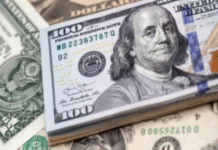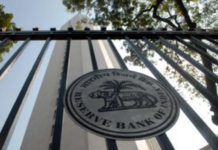New Delhi– With agriculture income growth “at an above-trend 4 per cent”, India’s real gross domestic product (GDP) is expected to grow this fiscal at 7.9 per cent, while annual retail inflation would remain contained at 5 per cent, Indian rating agency Crisil said on Sunday.
“Net-net, Crisil expects real GDP to grow 7.9 per cent this fiscal and agriculture GDP at an above-trend 4 per cent, while CPI inflation would remain contained at 5 per cent (10 basis points) up year-on-year,” Crisil said in a research note here ahead of the Reserve Bank of India’s RBI) maiden monteray review on Tuesday under a newly constituted Monetary Policy Committee
“As for the road ahead, copious reservoirs augur well for the rabi season that starts this month,” it added.
Noting that the distribution of monsoon this season has been the best in the last three years, with only a third of the districts seeing deficiency compared with almost half in fiscal 2015 and 46 per cent in 2014, Crisil said it expects nominal agricultural GDP to rise by Rs 1.49 trillion this fiscal, compared with Rs 978 billion in fiscal 2016.
“So this time around, India’sconsumption story will have two legs instead of just the urban engine on which it has duked out the past two years,” the report said.
“We see private consumption rising 90 basis points to 8.3 per cent this fiscal compared with 7.4 per cent in fiscal 2016,” it said.
“Crisil’s state-wise Deficient Rainfall Impact Parameter, or DRIP, scores show all states barring Gujarat, Tamil Nadu and Odisha are above-trend,” it added.
With ample rainfall this monsoon, the reservoir storage situation has improved.
“Data till September 22 indicates reservoir storage was 17 per cent higher on-year. This should support agricultural production this season and the next,” Crisil said.
The agency expects good agricultural output help ease pressure on food prices.
“On the inflation front, we expect ample kharif production to boost supply and bring down food inflation, especially for pulses where inflation has remained in double digits for 14 months on the trot now,” it said
On the other hand, recent data shows global food prices are skyrocketing. Where inflation settles will depend on the interplay of good monsoons, tending to lower domestic food inflation, and rising global prices exerting an upward pressure,” the report said.
“Sugar and confectionary prices have risen 17.7 per cent on-year since the beginning of fiscal 2017 and this continues to be a stress point for food inflation in the months ahead,” it added.
India’s annual rate of inflation based on wholesale prices touched a two-year high in August at 3.74 per cent from 3.55 per cent in the month before, official data showed in September.
After rising for the first time in April following 17 straight months of contraction, the WPI has cumulatively risen by 4.45 per cent in the current fiscal up to August, as against 0.23 per cent for the corresponding period in 2015.
Food articles inflation in August increased by 8.23 per cent on year-on-year basis.
Earlier data on the consumer price index had showed that the annual retail inflation had eased by 100 basis points to 5.05 per cent in August.






